BLOG ONE OF THREE on WORSENING OZONE HOLE OVER TIBET
Official China is fixated on controlling everything, including the weather, even when science struggles to provide methods for doing so. China boasts of doing weather modification in Tibet, having spent six decades trying to seed rain over water catchments to compensate for lowland China’s wasteful overuse of water.[1]
 It’s a classic case of policy overshooting science, as there is precious little scientific evidence that cloud seeding works. [2] This is especially true given the vast size and low population density of the Tibetan Plateau: does it really matter if cloud seeding causes the rain to fall here or five kms away?[3] And what if the fall becomes destructive hail, common enough in Tibet without cloud seeding artillery making it worse?
It’s a classic case of policy overshooting science, as there is precious little scientific evidence that cloud seeding works. [2] This is especially true given the vast size and low population density of the Tibetan Plateau: does it really matter if cloud seeding causes the rain to fall here or five kms away?[3] And what if the fall becomes destructive hail, common enough in Tibet without cloud seeding artillery making it worse?
China does not, however, boast of its far bigger impact on Tibetan skies, threatening the health of all living organisms in Tibet: its’ persistent production of illegal chemicals that destroy the protective ozone layer of the upper atmosphere.
The Tibetan Plateau, as Chinese scientists have reminded us for decades, is our planet’s Third Pole. It is like the Arctic and Antarctic not only in being a polar extreme of frigidity but in other ways too. That includes having an ozone hole in the upper atmosphere, which ruins the capacity of this ocean of air above us to protect us from damaging radiation coming at us from outer space, especially from the Sun.[4]
While the ozone holes above the North, South and Tibetan Poles has been well known to science for decades, it seemed a cure was in place. Unlike the climate change treaty negotiations which faltered in Paris in 2015, after crashing in Copenhagen in 2009 due to China’s intransigence, the world has rightly celebrated the 1988 Montreal Protocol on Substances that Deplete the Ozone Layer as a great success. That treaty, banning the industrial production and use of ozone-depleting substances (ODS), was universally accepted, and observed. It became a model for how the world could manage to unite to deal effectively with a threat common to us all, the only one of the environmental conventions that actually works.
Because ODS remain active in the upper atmosphere for a long time, there has been so far very little shrinkage in the polar ozone holes, but the world was on the right track, all countries working together, and Tibetans, vulnerable to high levels of damaging ultra -violet (UV) rays, could look forward to a gradual diminution of the danger.
Attention turned to more urgent issues, including global climate change, confident that one major problem was solved, and we could move on. Little has been heard of the ozone holes, for many years, least of all the ozone hole over Tibet. However, the story is far from over.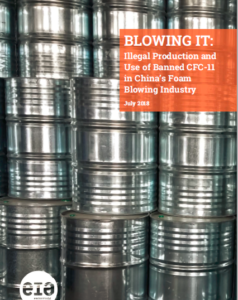
Now, thanks to remarkable investigative reporting within China, it turns out that levels of ozone-depleting chemicals are again rising, and the culprits are Chinese companies making the same polyurethane foam that turned Grenfell Tower in London into a funeral pyre. Innumerable buildings in China are coated in that foam insulation, and its manufacture is cheapest when the industrial process releases to the air the ozone depleters, stripping the planet, especially at its poles, of its protective outer layer.
Polyurethane foam is a miracle of modern science. It is easily manufactured and readily compressed to be transported to where it will be used. When squirted out of its container it instantly foams and hardens, expanding to a size far greater than when it is inside a pressurised canister. It effortlessly fills all the space it can expand into, such as awkward spaces between the outermost shell of a building and its newly installed rigid polyurethane cladding, thus sealing the gap, trapping air and heat, shutting out cold and drafty air, making it effective as an insulator. It can be applied without need for an expensive, skilled operator: just point and squirt.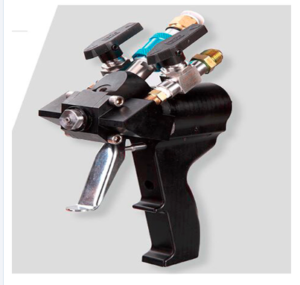
There are just two downsides. First, as those incinerated in Grenfell Tower discovered, it is not only flammable but burns fiercely, ascending a building, trapping those on upper floors in a fire started far below. Secondly, it needs a propellant, to carry it from its canister to where it is supposed to stay rigid, in place, an instant filler of space. That propellant, having done its job, becomes part of the atmosphere, slowly wafts upward into the stratosphere, where it persists for five decades, destroying ozone molecules wherever it bumps into them.
So destructive are these propellants, especially CFC-11, they make a hole in the protective ozone layer shielding life on earth from the harm of ultraviolet radiation. Not only do these CFC propellants ascend, they congregate at the three poles, and do maximum damage there, seasonally, in the spring and summer. These are powerful reasons why those propellants were banned by the Montreal Protocol of 1988, with China’s industries paid handsomely to reduce their use and replace the CFC propellants with less damaging alternatives.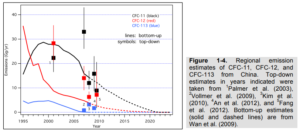
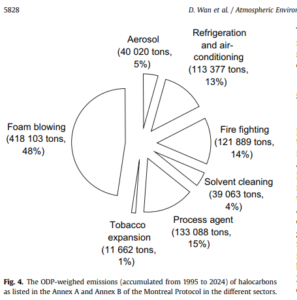
Despite such concerns, the use of polyurethane foam to make space disappear, to fill gaps, seal buildings from the weather and reduce the skills required for builders (and their pay), the use of foam has continued to expand.[5] This is specially so in China, which has had an urban construction real estate boom lasting decades. Everyone with access to capital, whether their own or that of others, has poured it into real estate speculation, into the urban construction of endless apartment tower blocks, in the sure expectation that no other investment of capital gains so constantly in value, without ever falling, like real estate. There is every incentive to take as many shortcuts as possible, in the rush to erect towers that will be bought by others, and maybe occupied eventually, by strangers. One shortcut is the widespread use of foam, inside walls, and outside a building’s walls to seal the gap with the added cladding.
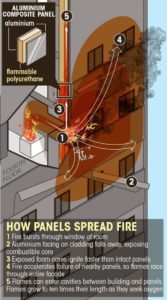 Officially, these urban construction shortcuts can be and are now manufactured without production of ozone depleting substances. Not only did China pledge to eliminate their production, and require substitutes to be used, China demanded, as a developing economy, to be financed globally to compensate its manufacturers to switch production to the less ozone-depleting alternatives.
Officially, these urban construction shortcuts can be and are now manufactured without production of ozone depleting substances. Not only did China pledge to eliminate their production, and require substitutes to be used, China demanded, as a developing economy, to be financed globally to compensate its manufacturers to switch production to the less ozone-depleting alternatives.
The global Clean Development Mechanism (CDM) was made for this purpose, to finance switching to alternative manufacturing processes less harmful to the environment, in emerging economies that have only recently industrialised. China fitted the bill better than anywhere.
The core weakness of CDM was that it was intended to achieve change in circumstances where, without CDM finance, that change would not have happened. But how does the donor determine whether an applicant would have made the change anyway, incentivisation or not? In a command and control economy, in China, a strong state has the power and ability to order entire factories to close, corporations to merge, whole industries to shut down for months, in the high pollution season, and it routinely exercises those powers.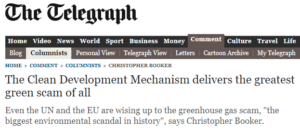
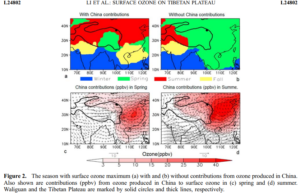
All official statistics showed China had drastically reduced its ODS production as promised under the terms of the 1988 Montreal Protocol, and was widely congratulated.
Even if the world had –through the World Bank and the Montreal Protocol- paid much more than necessary, ODS manufacture had officially almost ceased, and China proclaimed its credentials as a good global citizen. Too late, after several years of CDM grants, the international community realised, in 2011, that CDM had been systematically abused by China, with the production of ozone depleting substances (ODS) at the heart of the scam.
A SOLVED PROBLEM RETURNS
It was only in 2018 that the US government agency monitoring the actual measurable level of ODS in the upper atmosphere concluded that the ozone holes were not diminishing as expected, and that more ODS were being manufactured and released into the atmosphere, finding their way to the poles. For years, the scientific monitors had waited patiently for any sign that the polar springtime ozone holes were diminishing, but they knew ODS last for decades, and that even a single chlorine atom can pull apart hundreds of ozone molecules.
What they weren’t expecting was that in 2018 ODS production was rising again, despite all the official reports, and had probably been rising, unnoticed, for years.
The monitoring team at the US National Oceanic & Atmospheric Administration (NOAA) has the capability to detect where the ODS originated, by satellite-based measurement. The NOAA announcement diplomatically identified this only as “East Asia.” This was a diplomatic blurring, perhaps necessary given the many tensions between the US and China, and also between President Trump and NOAA, which he ordered to stay out of anything to do with climate change. Despite its vagueness as to source, NOAA’s May 2018 announcement took the world by surprise, and made news.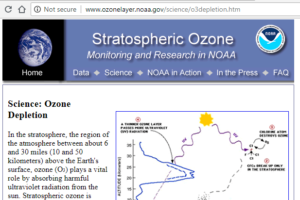
The NOAA report, led by Stephen Montzka, based in Boulder, Colorado, is from a team capable of discerning global atmospheric flows and patterns, understanding the planetary atmosphere as one whole system. They understand interdependence, རྟེན་ཅིང་འབྲེ ལ་བར་འབྱུང་བ་.
The sources of those ozone depleting gases were revealed with pinpoint precision a month later, not by any official pollution monitoring agency, or remote sensing satellite operator, but by old-fashioned on the ground sleuthing by environmental activists, in China. The London-based Environmental Investigations Agency, an NGO collective which has repeatedly exposed environmental wrongs worldwide, released a detailed and specific report, a follow through of its earlier reporting of China’s predatory extortions over ODS manufacture.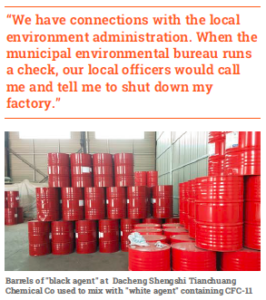
EIA’s July 2018 report named names. Blowing It details who, how and where illegal ODS production is happening in several Chinese cities, with photos of stacked pressurised barrels holding compressed CFC-11, and of its use in blowing foam onto the walls of a Chinese warehouse to insulate it.
The Environmental Investigation Agency’s 2018 report on the new polluters is detailed and specific. EIA reports that: “EIA has evidence from eighteen companies in ten provinces that they use CFC-11. Detailed discussions with company executives make clear that these are not isolated incidents but instead represent common practice across the industry.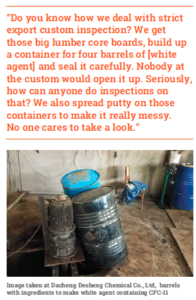
EIA’s calculations show that emission estimates associated with the level of use reported by these companies can explain the majority of emissions identified in the atmospheric study. In addition there is significant potential for illegal international trade in CFC-11 containing pre-formulated polyols for foam manufacturing in other countries.
“EIA has uncovered shocking new evidence that explains at least the majority of the mystery of the unaccounted CFC-11 emissions. Information collected from foam production companies in China confirms that CFC-11 continues to be extensively produced and used illegally in China’s PU [polyurethane] foam industry.”
“China has a growing PU foam market, estimated to represent about 34 per cent of the global market in2011. According to documents submitted to the Executive Committee of the Montreal Protocol’s Multilateral Fund (ExCom MLF) the industry sector comprises about 3,500 small and medium-size enterprises.
“Producers and traders of PU foam blowing agent told EIA sources that the majority of China’s foam industry continues to use CFC-11 due to its better quality and lower price. One seller of CFC-11 gas, Yantai Jinpei International Trade Co., Ltd estimated that 70 per cent of domestic blowing agent used CFC-11 and explicitly discussed exports in addition to his domestic sales.
“He stated that if CFC-11 was mixed with ‘white agent’ it could be exported without a license and that, unlike CFC-11 gas, it could not be tested. When questioned about the use of environmentally friendly blowing agents, the seller stated “BASF and Bayer have their own blowing system. But if you go with their environmental-friendly blowing agent, you’d have to purchase other ingredients from them too. And it’s a price fixing system. Very different from what you can get from us pricewise.” Large stacks of drums containing the banned CFC-11 were shown to EIA sources and their use demonstrated in the production of foam. Several factory representatives acknowledged the illegality of their actions; one factory confirmed keeping a stockpile of the legal alternative to CFC-11, HCFC-141b, as “just for show” when inspections occurred.
“With respect to exporting foam blowing agents containing CFC-11, the company representative stated “Do you know how we deal with strict export custom inspection? We get those big lumber core boards, build up a container for four barrels of [white agent] and seal it carefully. Nobody at the custom would open it up. Seriously, how can anyone do inspections on that? We also spread putty on those containers to make it really messy. No one cares to take a look.” The representative also claimed to hold a CFC-11 stockpile of hundreds of tonnes.
“The company representative stated that 70-90 per cent of their production used CFC-11 and that HCFC-141b represented just a small amount of use. He also stated “We purchase CFC-11 and mix it up. You see, nobody comes to inspect on our processing work…How do I explain this…in times of frequent environmental policy enforcements, we get inspected too. But the truth is we don’t have any pollution! We have connections with the local environment administration. When the municipal environmental bureau runs a check, our local officers would call me and tell me to shut down my factory. Our workers just gather and hide together. It’s pointless… government is going too far in these environmental protection efforts.”
Of the ten provinces (of China’s 33) where illegal ozone depleters are deliberately manufactured, most are in the east, but one is in the northwest, one in the southwest, much closer to Tibet: Xi’an Lvjianbao Construction Materials, Shanxi Province, and Chongqing Chuduan Insulation Materials, Chongqing.
EIA timed its release of this global setback to the eve of a Montreal Protocol workshop in Vienna, which quickly made this new danger to the poles its top agenda item. EIA, and NGO which knows how to work with states, released its report to China before going public.
The result was that: “The Government of China stated it would cooperate and use the mechanism of the Montreal Protocol to discuss the matter in an ‘open, transparent and active’ manner, use science to understand the sources of the emissions and take action to ensure the continued success of the treaty. In a bilateral meeting, the Government of China assured our climate campaigners it was already taking steps to follow up on the information we had provided to China several weeks before the public launch of the report. The Government has yet to be convinced, however, that illegal use and production of CFC-11 is occurring in China on a scale large enough to account for the unexpected rise in emissions reported in Nature.”
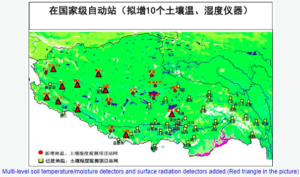 Is this crisis now over? The next global gathering of the Montreal Protocol on Substances that Deplete the Ozone Layer is larger, more formal and more binding on all signatory states, and is in November 2018, in UN jargon MOP30, meaning the 30th annual meeting of all parties to the 1988 Montreal Protocol. The world’s most successful environmental treaty is now at stake, and this time the global system is unlikely to again pay China hundreds of millions of dollars to close factories that should have long ago closed, or never opened.
Is this crisis now over? The next global gathering of the Montreal Protocol on Substances that Deplete the Ozone Layer is larger, more formal and more binding on all signatory states, and is in November 2018, in UN jargon MOP30, meaning the 30th annual meeting of all parties to the 1988 Montreal Protocol. The world’s most successful environmental treaty is now at stake, and this time the global system is unlikely to again pay China hundreds of millions of dollars to close factories that should have long ago closed, or never opened.
The official UN Ozone Secretariat report from the Vienna meeting takes the new evidence very seriously, and says it will be included in the key document for adoption by MOP30, the Executive Summary, with many recommendations, which fulfils the four-year cycle built into the Montreal Protocol, of a comprehensive assessment every four years of all available scientific evidence of where we are at, as a planet, on ozone depleting emissions, and what is to be done next.
China’s bad actors are again on the agenda. If China remains “yet to be convinced that illegal use and production of CFC-11 is occurring in China on a scale large enough to account for the unexpected rise in emissions,” it will need to produce evidence pointing elsewhere.
The polyurethane manufacturers who told EIA investigators they regularly use illegal CFC-11 rather than the alternatives which don’t damage the ozone layer, are big companies with lots of local government connections and support, but they aren’t the biggest. Biggest of all is state-owned ChemChina, which now owns a German subsidiary that makes polyurethane making equipment. For ChemChina, a high priority is to research ways of getting rid of chemical smells in brand new cars, which are off-putting to eager buyers. That chemical smell constrains China’s ambition to become a world leader in car making, not only on Chinese roads but worldwide, so the leakage of odorous volatile organic compounds (VOCs) from the polyurethane used all over a vehicle interior is a national project attracting state subsidies.
Research to rid new cars of a fishy “new car smell” is in the hands of a ChemChina subsidiary, Liming Research and Design Institute, an institute that began life in Tibet, in 1965. Liming’s website says it was originally based in Datong, a grimy industrial city north of Xining, in the Tibetan province of Amdo, Qinghai in Chinese.
Why would a chemical industry research lab set up in Tibet, way back in 1965? Qinghai 53 years ago was at the heart of China’s military industrialisation program, with nuclear weapons research and testing not far away on the shores of Qinghai Lake (Tso Ngonpo in Tibetan).
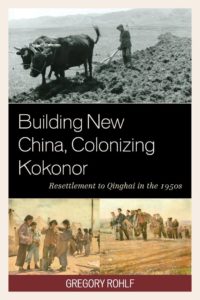 Polyurethane is a petrochemical, made from oil (and more recently from coal). China hoped Qinghai would provide not only a secure location for heavy military industrialisation, but also supply the raw feedstocks to support a large scale petrochemical industry. An oil field was discovered in the Qinghai Tsaidam Basin as early as 1955, and “by the end of 1956, there were more than 14,000 workers and staff on 106 teams doing petroleum prospecting work, including former People’s Liberation Army officers and soldiers.”[6]
Polyurethane is a petrochemical, made from oil (and more recently from coal). China hoped Qinghai would provide not only a secure location for heavy military industrialisation, but also supply the raw feedstocks to support a large scale petrochemical industry. An oil field was discovered in the Qinghai Tsaidam Basin as early as 1955, and “by the end of 1956, there were more than 14,000 workers and staff on 106 teams doing petroleum prospecting work, including former People’s Liberation Army officers and soldiers.”[6]
Extraction of oil from the Tsaidam Basin has continued ever since, at a rate of up to two million tons a year, enough for a petrochemical industry to be established in Gormo (Golmud in Chinese), with salt lakes handily nearby providing another raw material essential to petrochemicals. However, the Tsaidam oilfield was not big enough for revolutionary China’s ambitions, and was decisively eclipsed by the discovery in 1959 of Daqing, a much bigger oil field, in China’s far northeast.
Not only did the oil industry shift its focus, so too did Liming Institute, but it remains proud of its origins in Tibet, at the height of the Third Front campaign to militarise China to become a nuclear equal of the US and USSR.
DOES CHINA CARE?
Polyurethane is a multibillion dollar industry in China, and no-one seems much fussed if the manufacturers take cost cutting but illegal shortcuts to pump it out, as long as treating the global atmosphere as a waste dump attracts little attention.
China says it is committed to long term climate warming mitigation, but manufacture of illegal CFC-11 is far more damaging than carbon dioxide emissions. China’s focus is not on climate but on weather, because a centralised, authoritarian party-state has persuaded itself weather –where and when it next rains- is controllable. Climate is too big, too globally interconnected, too long-term, and in the short-term there are profits to be made. But what is at stake is the cost to human health, and the health of all sentient beings, and plant life, especially in Tibet, of an ozone hole that will persist for decades to come.
The health threat up close is the next blog in this series.
1] Committee of Weather Modification of China Meteorological Science Association (zhongguo qixiang xuehui rengong yingxiang tianqi weiyuanhui). 2009. Festschrift for 50 Anniversary of China Weather Modification Industry (Zhongguo Rengong Yingxiang Tianqi Shiye 50 Zhounian Jinian Wenji). China Meteorological Press (Qixiang chuban she), Beijing.
GUO Xueliang and ZHENG Guoguang, Advances in Weather Modification from 1997 to 2007 in China, Advances in Atmospheric Sciences, VOL. 26, NO. 2, 2009, 240–252
[2] Shiuh-Shen Chien, Dong-Li Hong, Po-Hsiung Lin, Ideological and volume politics behind cloud water resource governance – Weather modification in China, Geoforum 85 (2017) 225–233 [Three Taiwanese scientists critique of China’s compulsion to make clouds water on command]
[3] WANG Lijun, YIN Yan, YAO Zhanyu, et al., Microphysical Responses to Catalysis During a Stratocumulus Aircraft Seeding Experiment over the Sanjiangyuan Region of China, ACTA METEOROLOGICA SINICA VOL.27, #6, 2013, 849-
[4] China: Experts warn of ozone hole over Qinghai-Tibet plateau, Xinhua News Agency , August 12, 1999
[5] Zhifang Li, Pengju Bie, et al., Estimated HCFC-22 emissions for 1990-2050 in China and the increasing contribution to global emissions, Atmospheric Environment 132 (2016) 77-84
[6] Gregory C Rohlf, Agricultural Settlement to the Sino-Tibetan frontier 1950-1962, PhD dissertation, U Iowa, 1999, 387
Gregory Rohlf. “Dreams of Oil and Fertile Fields: The Rush to Qinghai in the 1950s” Modern China: An International Quarterly of History and Social Science Vol. 29. 4 (2003) p. 455 – 489
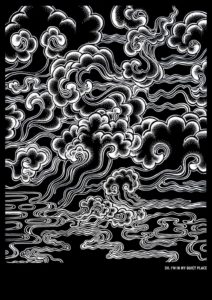
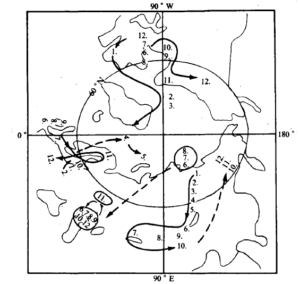
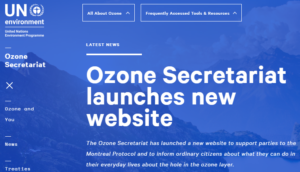
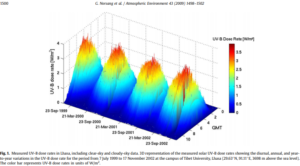
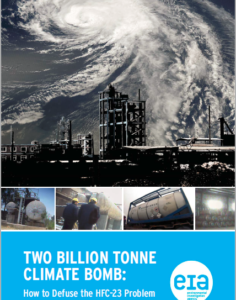
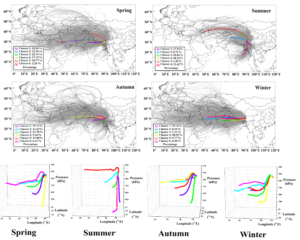
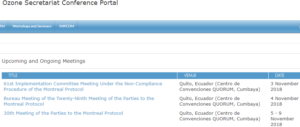


One reply on “PUNCHING HOLES IN TIBETAN SKIES”
[…] Click below to read the full article:http://rukor.org/punching-tibetan-skies/ […]